Episode # 5 by Mike Mettler, official FoghatStorian 03-17-22
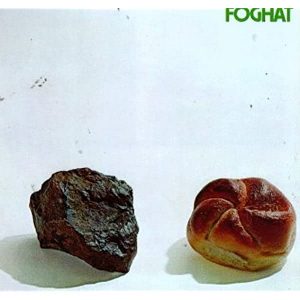
Rock ’n’ Roll, Foghat’s second studio album, was released 49 years ago by Bearsville Records on March 1, 1973. It was the first of two back-to-back Foghat albums produced by Tom Dawes, a man best known for singing and playing bass on The Cyrkle’s massive No. 2 hit single in 1966, the Paul Simon-penned “Red Rubber Ball.” The follow-up to the band’s groundbreaking, self-titled July 1972 debut album, Rock ’n’ Roll (a.k.a. Foghat) ultimately reached No. 67 on the Billboard Top 200 Albums chart.
The album’s lead single, the horn-enhanced groove-grinder “What a Shame,” reached No. 82 on the Billboard Singles chart — which, believe it or not, means it actually charted one position higher than where “I Just Want to Make Love to You,” the band’s signature single from their aforementioned first Foghat album, had peaked just the year before! Rock ’n’ Roll’s opening track, the driving, galvanizing travelogue “Ride, Ride, Ride,” was also released as a single, but it didn’t chart. Internationally speaking, the propulsive “Long Way to Go” was later released as a single across the Pond.
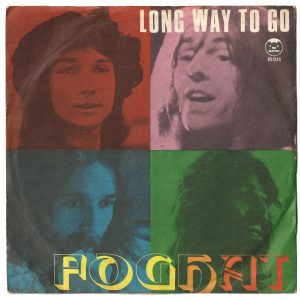
All nine songs that comprise Rock ’n’ Roll build on the promise of Foghat’s landmark 1972 debut album. In addition to the three songs mentioned above, Rock ’n’ Roll teems with songs like Foghat’s proto-blues cover of Chuck Willis’s 1954 R&B classic “Feel So Bad,” the reflective melancholy of “It’s Too Late,” the gnarly shave-and-a-haircut clinic of “Helping Hand,” the declarative frenzy of “Road Fever” (a song that remains in the band’s setlist to this very day), and the driving regret of “She’s Gone” — the latter track being the perfect lead-in for the album’s final tune, the touching balladry of “Couldn’t Make Her Stay.”
Foghat- Road Fever (LIVE 1974)
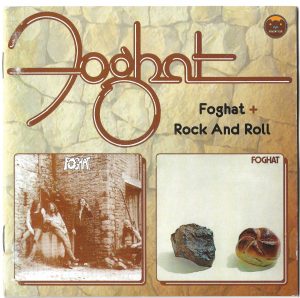
(For the record, and for all you fellow Foghat physical-media completists keeping score out there, in addition to the album’s inclusion in the Foghat: Original Albums Series and The Complete Bearsville Albums Collection box sets respectively, Rock ’n’ Roll also appears as part of a pair of two-fer import collections: 1) the Rock ’n’ Roll – Energized 2CD combo from Essential/Castle Music, and 2) the Foghat – Rock ’n’ Roll 2CD combo from Edsel Records.)
Fact is, Rock ’n’ Roll’s precise 38 minutes quite clearly cemented Foghat’s position as the premier boogie-rock band of the times, all thanks to the instinctive interactivity amongst that formidable first-born Foghat foursome — namely, the magical mesh of the undeniable talents of lead vocalist/guitarist Lonesome Dave Peverett, slide-guitar and dobro maestro Rod Price, bassist Tony Stevens, and drummer/percussionist extraordinaire Roger Earl.

While the album itself has long been officially nicknamed Rock ’n’ Roll because of its iconic cover-art elements — which we’ll discuss in much detail in just a bit — the record is alternatively known as simply Foghat, perhaps due in part to the practically unassuming, all-caps green-hued band name that appears all alone in the upper-right-hand corner. According to Roger Earl’s best recollection, he and his fellow Foghat bandmembers never actually discussed, let alone agreed upon, a name for the album, per se. “We just went along with it,” Roger confirms. “We were all caught up in making music and recording, and we were also out on the road seven days a week. Even though both Dave and I were very artistic, we were also very, very busy as a band, and we just didn’t get involved with any of that stuff at the time.”
Almost by default, this hands-off approach essentially jibed with the wishes of their manager at the time, Tony Outeda — a man who had his own vision for the album’s, shall we say, minimalist visual presentation. Holding the original vinyl album in his hands during our Zoom interview, Roger zeros in on the copious amount of white space on both the front and back covers. “Looking back on it, obviously, our manager was some kind of Beatles fan. He was a huge fan of The White Album,” the drummer observes, drawing parallels with The Beatles’ legendary double album from November 1968. This artistic homage of sorts can be seen most directly via the perfectly square black-and-white photos of the four Foghat bandmembers that appear across the bottom of the back cover, aligned neatly and just to the left of the blink-and-you’ll-miss-it mini-block of album credits. These four uncredited band shots instantly bring to mind the four rectangular B&W shots of The Beatles that adorn the inner-right gatefold of The White Album.

Continues Roger, “Why didn’t we put something on there about where the songs were recorded, and who else appeared on the album? I mean, it was recorded all over the world — in New York, L.A., London, and Wales — and with a lot of other people involved. I’ve wracked my brain about it, and I really wish we had included some stories there about ourselves and who we were at the time — kind of like the way we do it now with what you see on our current releases. But when you look at Rock ’n’ Roll, it’s nothing but a piece of f—ing cardboard!”
That being said, the way in which the front cover image came together is quite an intriguing story unto itself. In fact, the imagery was based upon a black-and-white photo taken by Robert Downey — perhaps best known today as being the father of A-list actor Robert Downey Jr., but who was also an acclaimed director in his own right, having lensed notable of-era films like 1969’s Putney Swope and 1972’s Greaser’s Palace (the latter of which Roger remembers seeing in the cinema at the time).
“Robert Downey sent us a picture of a rock and a roll in black and white, which I thought was pretty cool,” Roger recalls. “I think it was either Tony (our manager) or the art department at Warner Bros. saying, ‘No! You can’t have anything that minimalistic.’ But I loved it — it’s coal and a bun! Rock and roll! I thought it was perfect.”
Since using a B&W image on the front cover was apparently out of the question, Jimmy Outeda (Tony’s brother) was enlisted to upgrade the “props” for an in-color photo instead. “Jimmy was sent off to find a proper, decent looking piece of rock. He went to Central Park [in New York City] with his hammer and chisel,” Roger recounts. “One of New York’s finest came up to him while he was hammering away and said, ‘What the f— do you think you’re doing?’ (laughs) As I recall, when all six-foot-two of Jimmy came down to explain what he was doing, the cop told him about a store that actually sold rocks. That’s where the rock you see on the cover came from — a rock store! And the bun probably came from a corner deli right nearby in New York.” Looking at the image anew, Roger now concludes, “It is pretty cool, isn’t it? It really is iconic.”
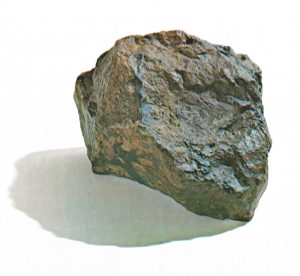 None of the above artistic endeavors are meant to overshadow and/or undercut the inherent boldness of the music found within the grooves of Rock ’n’ Roll, mind you. Because Foghat was in such high demand and constantly out on the road at the time, Rock ’n’ Roll wound up being recorded at various locales across the U.S. and the U.K., sometimes with additional personnel unfortunately neither logged nor properly credited on the album itself, just like Roger said. In certain regard, however — and in your FoghatStorian’s semi-humble opinion, that is — Rock ’n’ Roll shares some clear-cut lineage with the way Led Zeppelin put together their own iconic sophomore album amidst a cavalcade of tour stops here, there, and everywhere, October 1969’s Led Zeppelin II.
None of the above artistic endeavors are meant to overshadow and/or undercut the inherent boldness of the music found within the grooves of Rock ’n’ Roll, mind you. Because Foghat was in such high demand and constantly out on the road at the time, Rock ’n’ Roll wound up being recorded at various locales across the U.S. and the U.K., sometimes with additional personnel unfortunately neither logged nor properly credited on the album itself, just like Roger said. In certain regard, however — and in your FoghatStorian’s semi-humble opinion, that is — Rock ’n’ Roll shares some clear-cut lineage with the way Led Zeppelin put together their own iconic sophomore album amidst a cavalcade of tour stops here, there, and everywhere, October 1969’s Led Zeppelin II.
If Rock ’n’ Roll evokes any sort of central theme, it’s one born out of a sense of loneliness — a constant feeling of a band always on the move, with its members not quite connecting with the people around them no matter where they are. “That was life,” acknowledges Roger. “Dave and I both had wives and children, but we were never home. Tony lived with his mom and Rod lived with me until there was enough money for them both to rent somewhere. And if we weren’t on the road, we were in the studio. So you write about things like being lonely, coming home, I’ve just left home, I couldn’t make her stay.” (Those last five words are in direct reference to “Couldn’t Make Her Stay,” the album’s quite somber and acoustically driven final track.)
As soon as you drop the needle on Rock ’n’ Roll, the opening cut “Ride, Ride, Ride” brings forth a litany of train-related imagery, including the line that’s repeated twice at the end of the first verse, “I see the train I ride.” Confirms Roger, “Dave was a fan of trains. That’s how you moved around back then. Trains opened up the country, and the continent. You didn’t go on a bus to do that — you went on a train. And one of my earliest memories, from maybe when I was two years old [circa 1948], was my father used to make us toys. He made us a boat, and he made us a train that was gray, and black, and white. He made them because you couldn’t buy toys after the war [i.e., World War II]. Dad was really good with his hands.”

Roger believes the drums and bass for “Ride, Ride, Ride” were recorded at Bearsville Studios in Woodstock, New York —
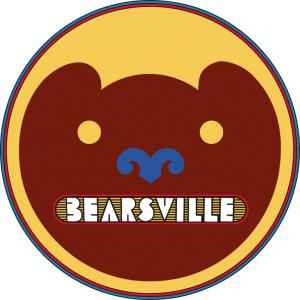
—tracks that were most likely held over from an earlier session helmed by Dave Edmunds, who had produced Foghat’s debut album — whereas the overdubs with the guitars, vocals, and uncredited female background singers were likely recorded in New York City, with Tom Dawes having written out the arrangements for those vocal parts. “I didn’t have a problem with it,” Roger allows, “but I was wondering how we’re going to emulate that because, most of the time, we liked the idea of recording everybody together. Whether we used the vocals or the rhythm guitar or not, we’d always have separation — but playing together was a big deal back then. It was part of our DNA; let’s put it that way. That’s how you made records.” (Incidentally, it’s worth noting eventual Foghat bandmember Nick Jameson was the engineer at Bearsville for a number of these sessions.)

One track retaining that Dave Edmunds sonic touch is the bluesy cover of Chuck Willis’s earlier noted “Feel So Bad,” which was also a hit for Elvis Presley in 1961, when it reached No. 5 on the singles chart. “Dave Edmunds most certainly would have dug Elvis Presley songs,” Roger agrees, “but [Lonesome] Dave came up with the idea of the song — and our version is very, very different than Elvis’s is. And I love that track. In fact, we played it live a few years back.” (We should also point out Foghat’s version also drops the self-referential word “I” from the very beginning of the original song’s title.)
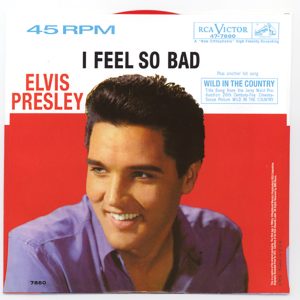
Roger then reveals Lonesome Dave’s son, Jason Peverett, recently told him “Long Way to Go” is one of his personal favorite Foghat songs. It’s also a track where Roger gets to take a brief drum solo. “Well, I mean, I can count to four,” Roger says with a light chuckle. “That’s a track we did in Los Angeles. Tom Dawes came out for that, and we recorded a few of these songs there. The reason I say that is because of the following track, ‘It’s Too Late.’ The drum sounds on those two songs are very similar.” (In case you’re wondering, the organ-like sound on “Long Way to Go” is actually ace axe master Rod Price going for a Leslie speaker type of effect with his guitar tone.)
The song that opens Side 2, “What a Shame,” found Roger marveling at its writing credit, upon further review. “It’s funny because, for years, I didn’t realize that song was credited only to Rod Price,” he notes. “I remember one time when we were in Wallingford, England, where we were living. On our days off, I’d go down to the River Thames and up to the loch, and I’d fish for pike because we could eat them. They were food. And one day, Rod followed me down there. He came down with his guitar, and he started playing me ‘What a Shame,’ and I’m going, ‘Oh, wow! That’s cool.’ I think we recorded that one in Rockfield Studios with Dave Edmunds, and not with Tom Dawes. We originally did it for the first album, but it came out later.”

“What a Shame” is another track featuring a pair of uncredited, albeit quite well-known, musicians: namely, horn legends Jim Price and Bobby Keys. “We were over in England in Olympic Studios, talking with [noted producer/engineer] Andy Johns about putting horns on it,” Roger continues, We got Jim and Bobby in there, and they listened to the song. I think Bobby wrote out the charts. And Andy Johns did a fantastic version of it. I remember at the time thinking, ‘This f—ing guy’s great,’ but we actually ended up using a mix done by Dave Edmunds. In recent times, though, that Andy Johns mix came out on a later release.” (Indeed, if you want to hear that very same Andy Johns mix complete with a full sax solo, seek out the Rarities portion of the second disc in the 2CD Edsel Records set featuring the triple play of Girls to Chat & Boys to Bounce – In the Mood for Something Rude – Zig Zag Walk. In that Rarities section, you’ll also find the Dave Edmunds mix of “Ride, Ride, Ride” and the Bearsville Mix of “What a Shame.”)

Helping Hand,” the B-side to the aforementioned “What a Shame,” is another track recorded in New York, this time with legendary sessions drummer Bernard Purdie in tow. (To read Roger’s in-depth recollections about meeting and working with Bernard, please consult his extensive Pretty Purdie commentary in our FoghatStory on the making of January 1974’s Energized, which first posted here on January 7, 2022. By the way, if there’s one takeaway from that story: never, ever put a wallet down on any drum kit Bernard is playing in the studio.) “We didn’t play a traditional Bo Diddley beat on ‘Helping Hand,’” Roger adds, “but you can feel a little of the rhythm there.” At this point in our Zoom call, Roger pauses to tap out the song’s unforgettable groove on his knees for added emphasis.

As noted earlier, “Road Fever” remains a vital part of the modern Foghat setlist. “That one was recorded at Olympic Studios, I believe,” says Roger, “and it also has a horn section on it — but I don’t know who it was. It wasn’t Bobby Keys and Jim Price again. I think it might have been some London session guys Tom [Dawes] brought together and wrote out the charts for.”
Now dig this: Roger actually wrote some of the lyrics for “Road Fever” himself because, well, Lonesome Dave simply did not know how to drive. The recurring line “Give her the gun” is a Roger special all the way — and it’s a very personal one. “Dave knew I was an avid driver,” he notes, “and ‘give her the gun’ came from my grandfather. After the war, we would all cram into this 1950s convertible Opal. Dad fixed the top so it wasn’t a convertible anymore, and I don’t know how we all got in there!
“Anyway,” Roger continues, “I would sit in the front with my grandfather, and I was on his lap, and three, or possibly even four, people would sit in the back. I don’t know how; I guess we must’ve been small! (laughs) Granddad would say, ‘Give her the gun, Lar!’ Lar, or Larry, is short for Lawrence, which is my father’s name. And that meant, ‘put your foot down.’ I think 60 miles an hour was flat-out — maybe 65 down the hill — but that’s where that line came from. Pedal to the metal!”
“She’s Gone” is another favorite, and Roger believes it was “probably from the same time as ‘Long Way to Go’ and ‘It’s Too Late.’ I’m pretty sure, anyway; I could be wrong. But Rod’s guitar playing on that one is fantastic. I remember when we were working on the arrangement, I thought, ‘Rod’s guitar is so f—ing cool!’ I hadn’t heard anything even close to it before that. He was brilliant in that way.”
She’s Gone
https://youtu.be/Ww3GGrKGCUc
Lonesome Dave’s “Couldn’t Make Her Stay” closes out the album, and it’s a track Roger admires, even if he doesn’t play on it. “It’s a ballad without any drums,” he observes. “What was that all about? I have no idea where it came from, because I wasn’t there! But it sounded like something Dave did on his own. Even his voice sounds very, very different on it, like it was done on a home recording or something — but I have no direct knowledge of that.”
All told, the power of all nine of these songs is further proof Rock ’n’ Roll is the connective glue between Foghat and Energized. “Very much so, yes,” Roger concludes. “It was a transitional record in many, many ways because we recorded it all over the place, and we were on the road as well. All of a sudden, we were always working, and it was a whole different animal. Rock ’n’ Roll really was the glue. There are some fantastic songs on there, and I’m really proud of the way we did it.”

In short, Rock ’n’ Roll is a bold statement from a band knowing its core strengths and lookin’ to its future — the types of things that Energized Foghat to give her the gun and continue raising the stakes yet again with their next studio album.
Keep an eye on this space for many more in-depth FoghatStories to come — all of which are the precursors for the officially authorized Foghat biography by author Mike Mettler that we currently have in the works! Stay tuned!!


 None of the above artistic endeavors are meant to overshadow and/or undercut the inherent boldness of the music found within the grooves of Rock ’n’ Roll, mind you. Because Foghat was in such high demand and constantly out on the road at the time, Rock ’n’ Roll wound up being recorded at various locales across the U.S. and the U.K., sometimes with additional personnel unfortunately neither logged nor properly credited on the album itself, just like Roger said. In certain regard, however — and in your FoghatStorian’s semi-humble opinion, that is — Rock ’n’ Roll shares some clear-cut lineage with the way Led Zeppelin put together their own iconic sophomore album amidst a cavalcade of tour stops here, there, and everywhere, October 1969’s Led Zeppelin II.
None of the above artistic endeavors are meant to overshadow and/or undercut the inherent boldness of the music found within the grooves of Rock ’n’ Roll, mind you. Because Foghat was in such high demand and constantly out on the road at the time, Rock ’n’ Roll wound up being recorded at various locales across the U.S. and the U.K., sometimes with additional personnel unfortunately neither logged nor properly credited on the album itself, just like Roger said. In certain regard, however — and in your FoghatStorian’s semi-humble opinion, that is — Rock ’n’ Roll shares some clear-cut lineage with the way Led Zeppelin put together their own iconic sophomore album amidst a cavalcade of tour stops here, there, and everywhere, October 1969’s Led Zeppelin II.










